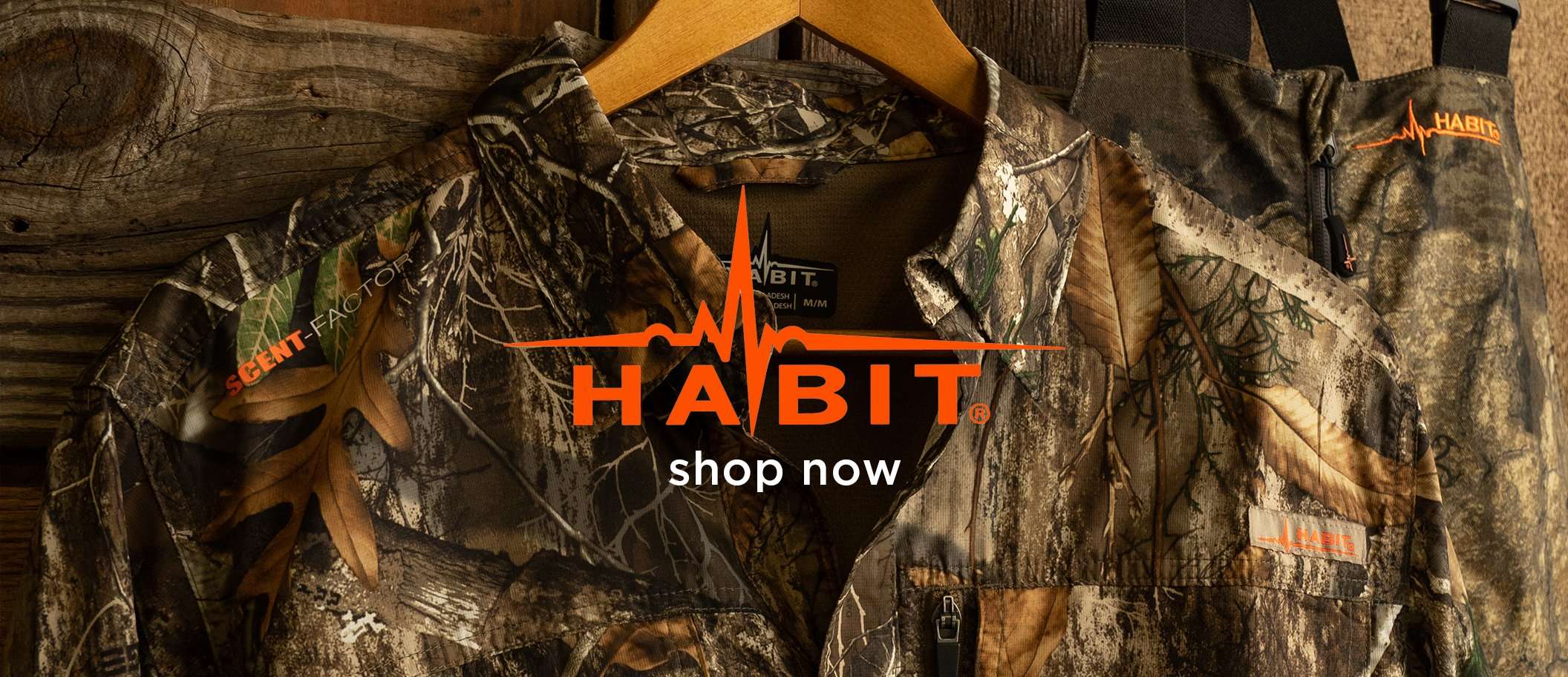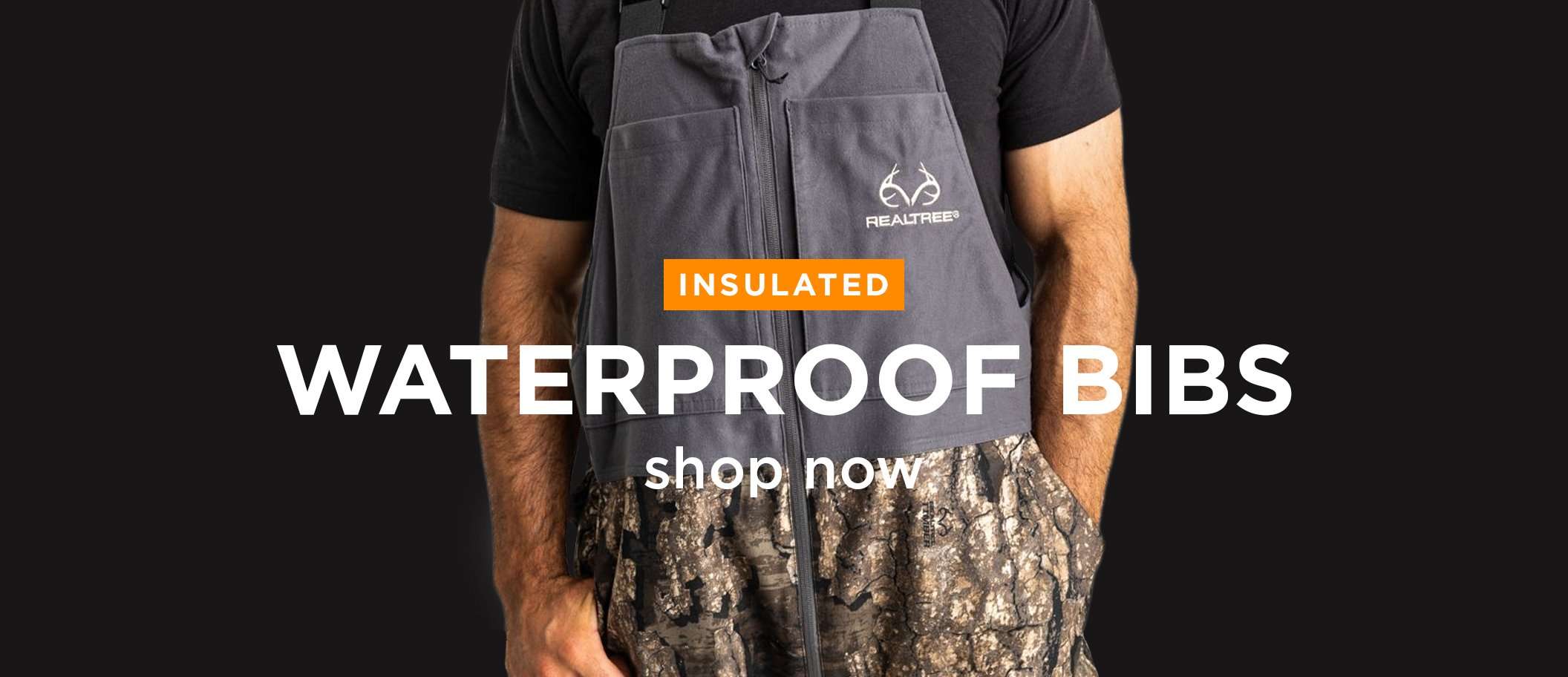Bites change year to year but right now, these stops deliver the goods for crappies, bass, muskies, and more
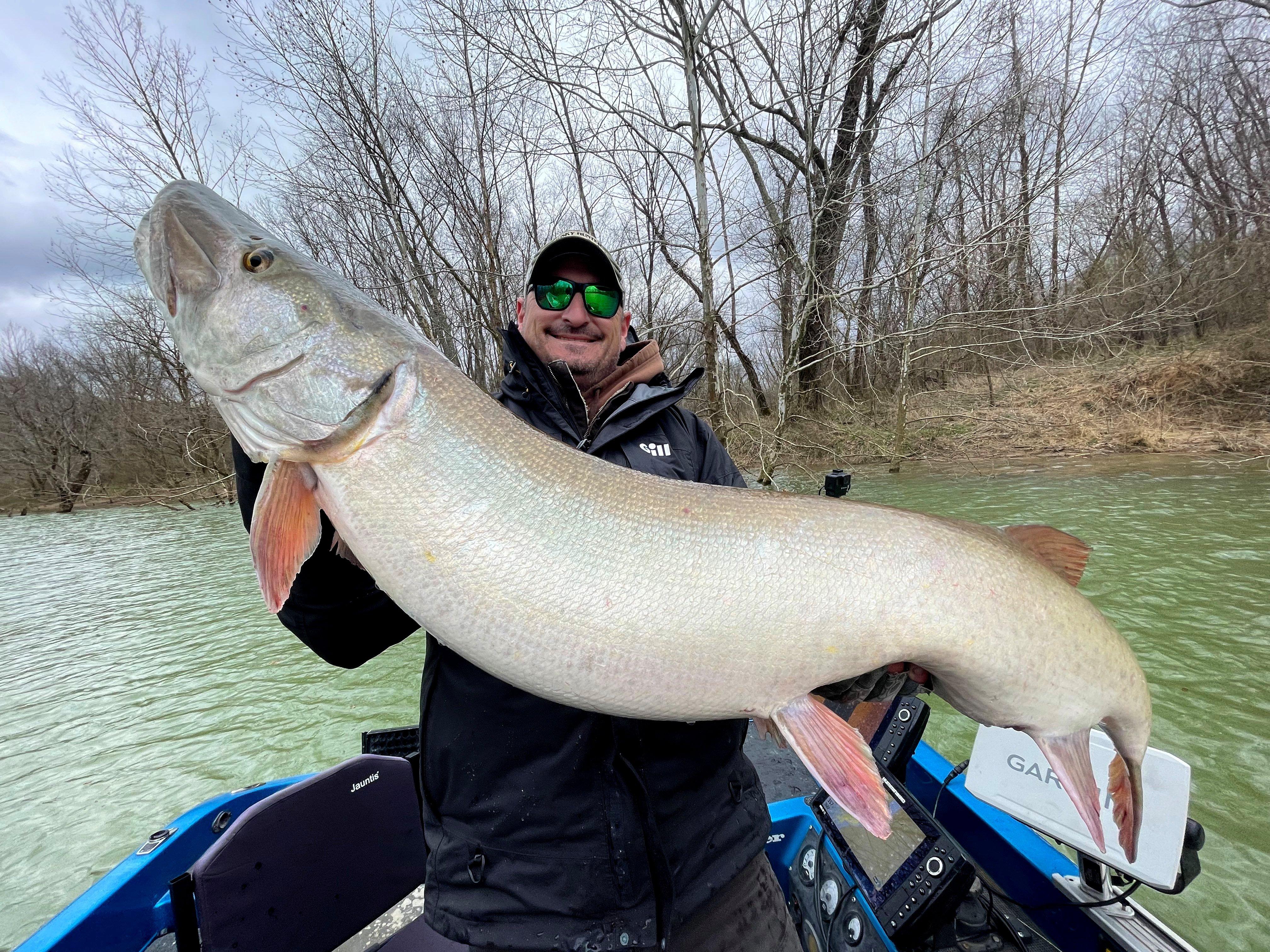
Cave Run Lake musky guide Gregg Thomas shows off a 52-inch pre-spawn trophy. Image courtesy of Gregg Thomas / Battle the Beast Guide Service
With the holidays behind us, it’s natural to turn our minds to fishing. And, while most of the country waits in anticipation for spring, a few select locations have a hot bite going on right now. From panfish to muskies, there’s a place where your favorite fish is biting. Let’s uncover the best locations.
KERR RESERVOIR STRIPERS
Bracey, Virginia
Well known as a bass fishing destination, Kerr Reservoir has become a premier striper fishery in recent years. Here, wintertime anglers find stripers schooled up in creek mouths and deep lake basins, chasing the lake’s abundant threadfin shad. Fish weighing up to 10 pounds are common, with larger stripers coming on occasion.
To score, anglers must first find the bait, a relatively easy task with today’s modern depth-finder technology. As water temperatures cool, shad pack into creeks in the afternoon, soaking up the sun. Diving birds occasionally give them away, working with the feasting stripers below. It’s no time to be a shad in Virginia.
The most popular techniques involve swimbaits, both single-lure methods and umbrella rigs, fished on standard bass gear. Lipless crankbaits can produce, as can jerkbaits, but single-hook rigs are easier to get out of fish and back in the water when things heat up. This is fast-action fishing when it’s on — doubles and triples are common, testing your line and your back. Stripers eat good, too, especially from cold water. Be sure to check state regs and release most.
Don’t Miss: TIPS FOR PIER FISHING

Stripers weighing up to 10 pounds are common in the Kerr Lake Reservoir. Shutterstock Image
LAKE HAVASU REDEARS
Lake Havasu City, Arizona
Have you dreamed of catching a 4-pound panfish? If so, add Lake Havasu to your bucket list. Home to the world record redear sunfish (shellcracker in other places; cousins to the pumpkinseed), Havasu consistently puts giant fish exceeding 16 inches on the board. Talk about a tackle-tester! Just imagine the fight from the hubcap-shaped monsters. You’ll want to give it a try.
Most popular fishing periods are around the spawn, but savvy Havasu vets know the pre-spawn locales of the lake’s biggest fish, often fishing water as deep as 40 feet. Minuscule plastic baits reign supreme.
With warming temperatures, Havasu’s giant redears can often be taken on fly, putting up a fight better than any panfish on the planet. As a bonus, bass fishing is strong, including a booming population of smallmouth. The weather is nearly always outstanding this time of year, and it’s before spring break, when college kids and cigarette boats take over the town and the waterways.
Don’t Miss: How to Fish for Shellcrackers
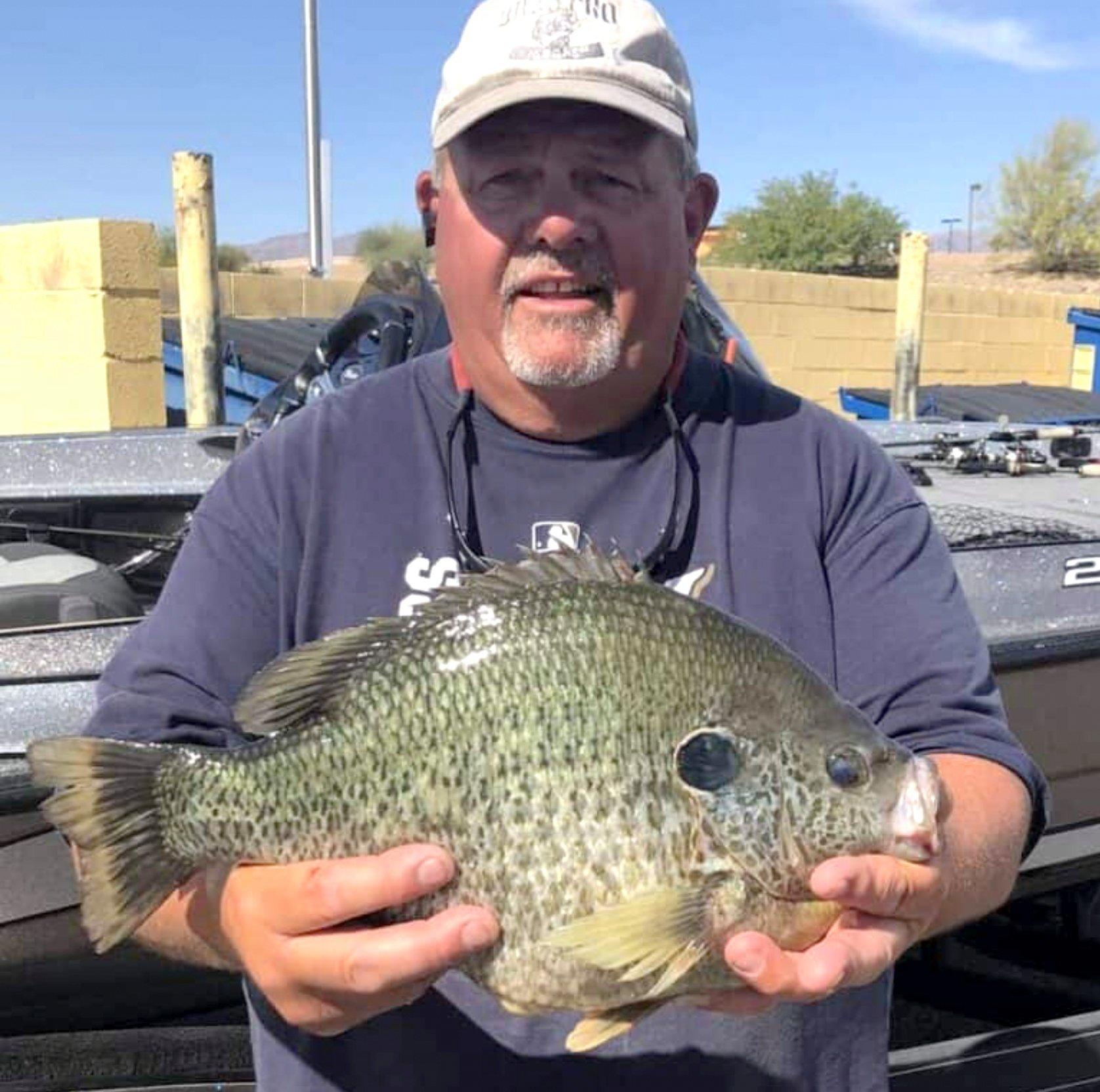
Thomas Farchione of Waterford, Wisconsin, shows off this nice shellcracker with a 20-inch girth. Image courtesy of Outdoors First
MUSKIES OF THE MID-SOUTH
Smithville, Tennessee
Salt Lick, Kentucky
One of the first musky destinations to come on the winter fishing radar is Cave Run, just east of Lexington, Kentucky. Here, muskie gurus from the North migrate to extend their seasons, often catching the biggest fish of the year. It’s old-school casting techniques around cover, including timber, that’s hard to duplicate in other parts of the country. In colder months, live suckers present the most carnivorous bite to be found in freshwater. Shoreline scenery, with hills and hollers, is breathtaking.
Cave Run guides also toss in some trolling, especially this time of year. Fishing near bottom in deeper portions of the lake containing points and humps can produce. Stick to smaller lures than what you might use in summer. And be prepared to bail out should the weather sour or the water turn muddy. Pushing it much past December always depends on the year. Currently, waters are still open.
Heading farther south — and into warmer weather — finds many musky junkies around Center Hill Lake, near Smithville, and area rivers including the Caney Fork and Collins. River habitat includes riffles, rapids, and waterfalls, something most muskie anglers have never experienced. Fifty-inch fish are relatively common, and each waterway also features outstanding trout and striper fishing. The midsection of the country shows out when winters stay mild, and prevents a mega-drive to get to ice-free waters.
Don’t Miss: Angler Earns More Than $100,000 For Removing Unwanted Species From Oregon Rivers
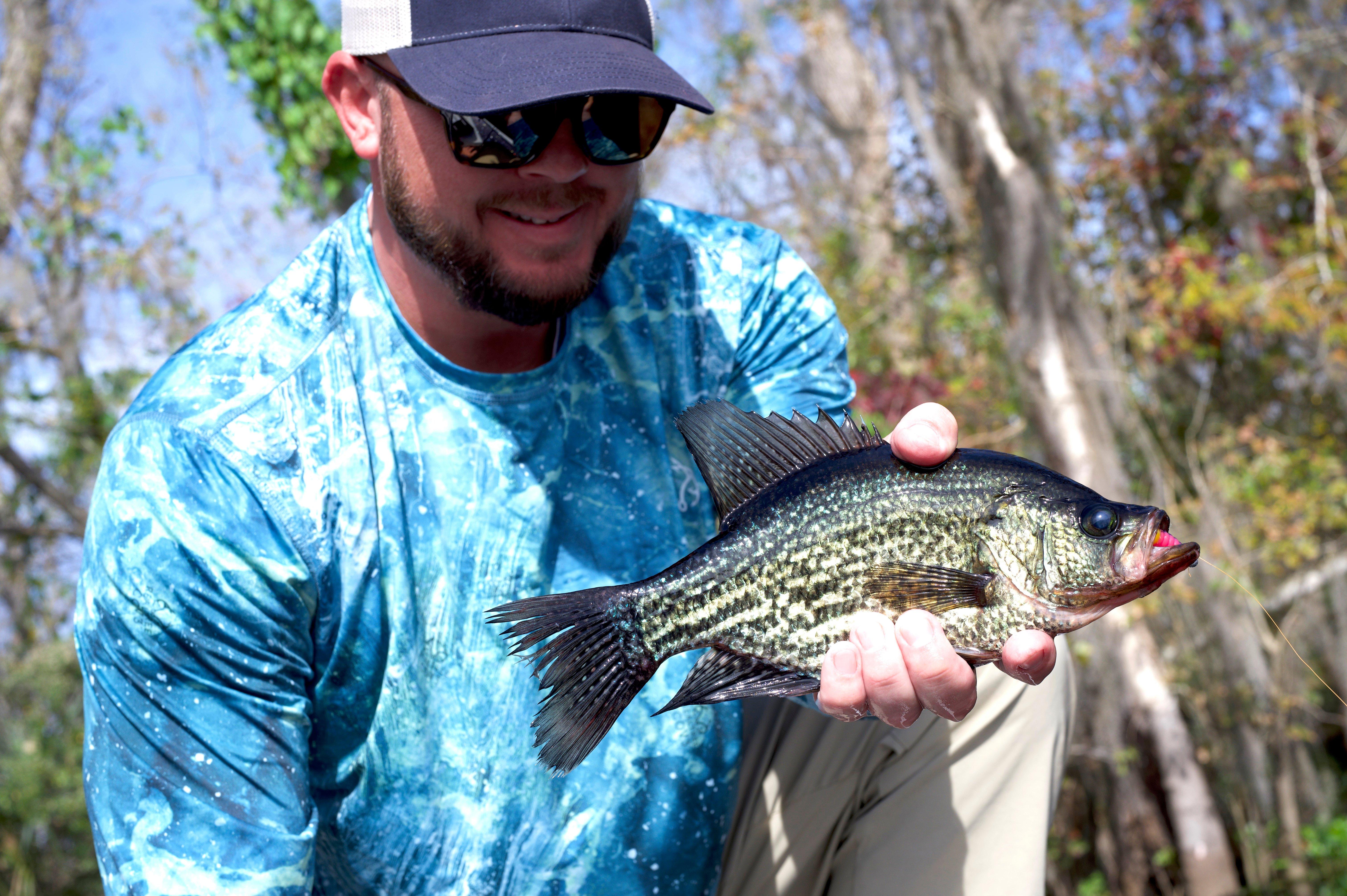
Anglers can find an abundance of crappie-fishing opportunities throughout the Sunshine State. Image by Millennium Promotions, Inc.
BLACKWATER CRAPPIES
Silver Springs, Florida
Each winter, droves of Northerners head to Florida to relax and enjoy the outdoors, often taking part in the vast array of angling opportunities the state offers. While many freshwater fishers seek lunker bass, even more fish for crappie. From the panhandle to the Everglades, crappie fishing opportunities exist just about everywhere.
The midsection of Florida — from Gainesville to Winter Haven — includes waters that consistently rate near the top. Places like Orange and Lochloosa Lake, the St. Johns River, Harris Chain, and Lake Kissimmee crank out thousands of “speckled perch” (the local name for black crappie) each season.
Fish average 10 inches, and sometimes exceed 2 pounds. Most of the fishing is done around shoreline cover, although high-tech angling with the use of specialized sonar has become popular in open-water areas. Just about every type of angler can find water to his or her liking. Tackle choices are simple, with small plastic jigs carrying the load.
Central Florida offers the benefit of the country’s top theme parks for anglers looking for a day away, or a place to entertain the kids. Natural wonders make up the scenic route for outdoor enthusiasts, including a number of first-magnitude springs, miles of hiking and biking trails, birding opportunities, and paddlesports around every corner.
Don’t Miss: How to Crappie Fish Without a Depth Finder
LONE STAR LUNKERS
Ballinger, Texas

Lee Ann Powell shows off a massive Texas lunker caught in O.H. Ivie Lake. Image courtesy of Lee Ann Powell
Texas currently tops the list as the country’s big bass leader, with O.H. Ivie Lake serving as a Mecca for traveling lunker junkies. A 17-pound fish was caught there in February of ’23, joining four other Ivie monsters now holding spots in the Texas Top 25.
This news may confuse occasional bass anglers who always viewed Lake Fork as the state’s top destination. True, Fork still holds the Texas state record (an 18-pound bass caught in 1992), and Fork fish occupy the majority of the Texas big bass lists, but it’s been a decade since Fork cranked out a true monster. Today, visiting bass boats crowd the pumps at filling stations all around Ballinger, Texas — the closest big town to Ivie — their owners grabbing a morning coffee before heading to Valhalla.
January bass fishing is slow anywhere, including Texas, but the catch of a lifetime is always just one cast away. Most of the trophy hunting is done utilizing forward-facing sonar and offshore techniques, including big swimbaits and umbrella rigs. Fish can be caught around the bank as well on worms, jigs, and crankbaits. Much of Ivie’s shoreline is bluffy rock and timber, requiring heavy line and strong nerves. Fishing there never gets old, but be prepared to join the crowd. A new state record likely swims in O.H. Ivie, and many of the state’s best big bass guides aim to catch it.
Don’t Miss: Key Baits and Must-Know Tactics for Ledge Fishing Bass

